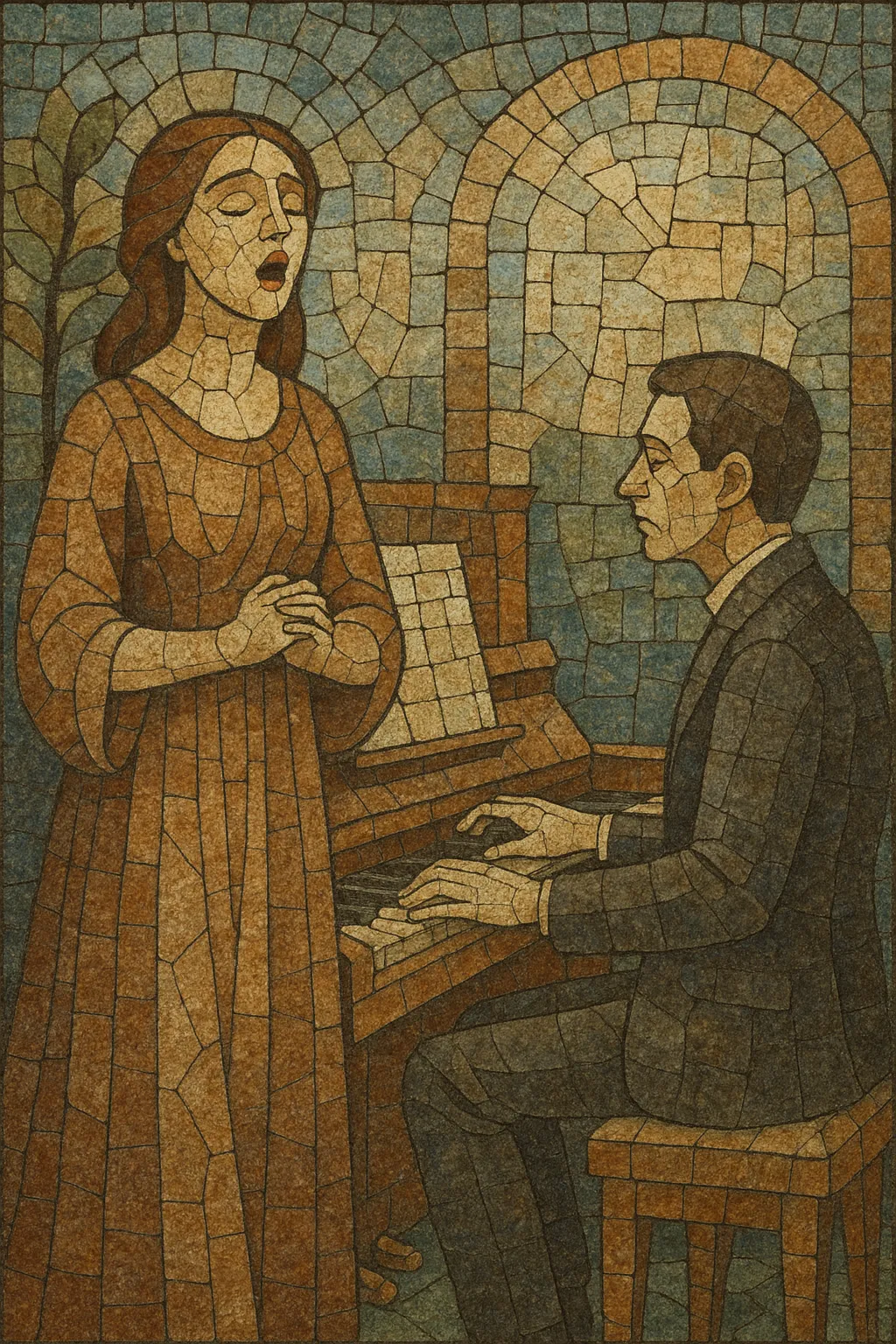Lied (plural: Lieder) is the German art song: a finely crafted setting of German-language poetry for solo voice and piano. It is characterized by an intimate, chamber-scale dialogue between singer and pianist in which the accompaniment is an equal partner rather than mere support.
Texts are drawn from canonical poets such as Goethe, Heine, Rückert, and Eichendorff, and the music often employs vivid text painting, flexible prosody, and nuanced harmonic color to illuminate poetic imagery. Formal designs include strophic, modified strophic, and through-composed forms, allowing composers to mirror a poem’s narrative or emotional arc.
The Lied flourished in the Romantic era, crystallizing ideals of interiority, nature, folklore, and the unity of poetry and music. It remains central to recital repertoire and a cornerstone of German vocal culture.
Early German-language songs by composers such as Haydn and Mozart established models for strophic vocal settings with keyboard. Enlightenment aesthetics, domestic music-making, and the rise of printed poetry fostered a culture in which the solo song could flourish.
Franz Schubert transformed the genre beginning in the 1810s, elevating the piano to a dramatic narrator and creating landmark song cycles such as "Die schöne Müllerin" (1823) and "Winterreise" (1827). His through-composed designs, tonal narratives, and motivic accompaniments set a template for Romantic Lied.
Robert Schumann deepened literary-musical integration in the 1840s, notably in "Dichterliebe" and "Frauenliebe und -leben", using cyclical coherence, poetic subtext, and harmonic ambiguity to connect songs into psychologically unified arcs.
Johannes Brahms refined folk-like simplicity and classical balance while employing rich chromaticism. Hugo Wolf, influenced by Wagnerian harmony and prosody, produced intensely declamatory miniatures that hewed closely to the syntax and rhetoric of each poem. Felix and Fanny Mendelssohn and Clara Schumann expanded the repertoire with elegant, lyrically poised Lieder that thrived in salon and concert settings.
Richard Strauss and Gustav Mahler extended the Lied toward larger forces: Strauss with virtuosic late-Romantic piano textures and opulent melodies; Mahler with the orchestral Lied, bridging chamber intimacy and symphonic scope (e.g., "Kindertotenlieder").
The Lied remained central to recital culture (Liederabende), and modern performers emphasize textual diction, historical style, and collaborative partnership. New Lieder continue to be composed, while the Romantic corpus remains a benchmark for song composition and interpretation.


